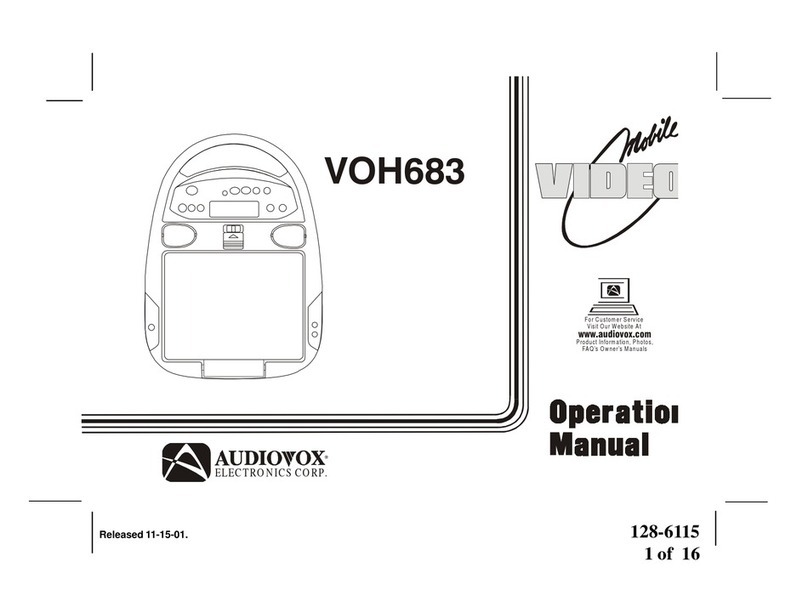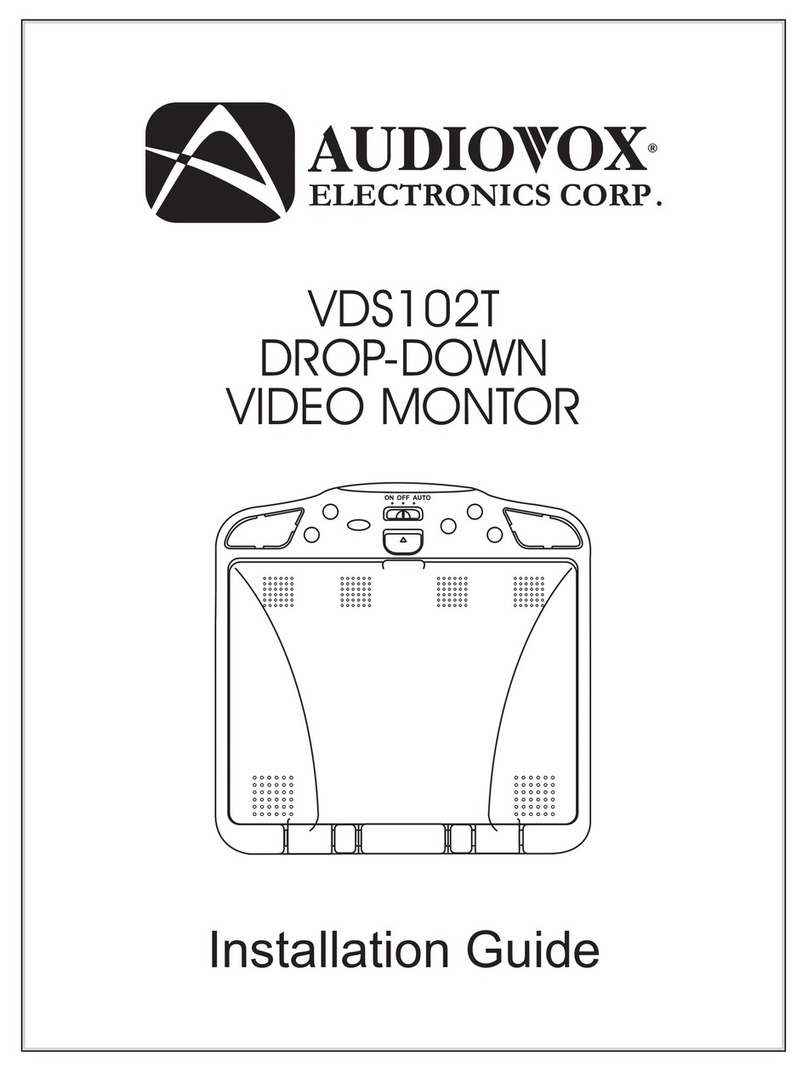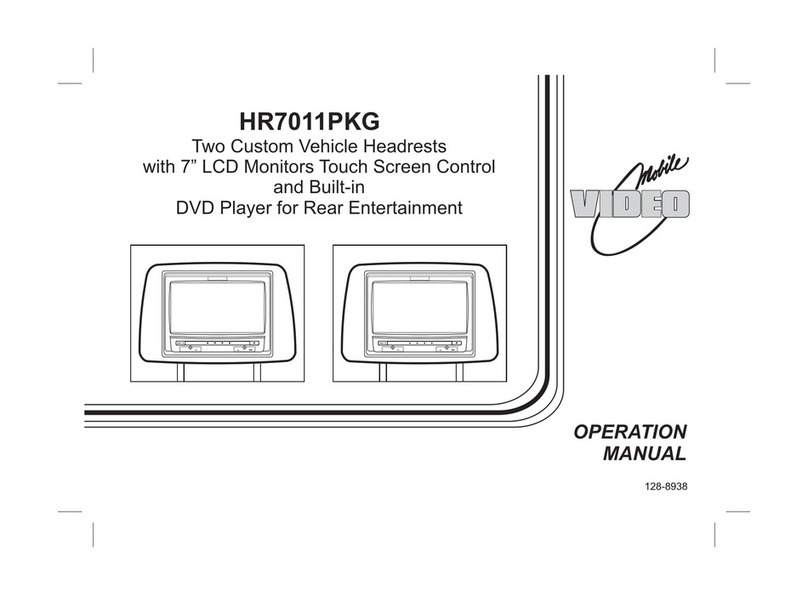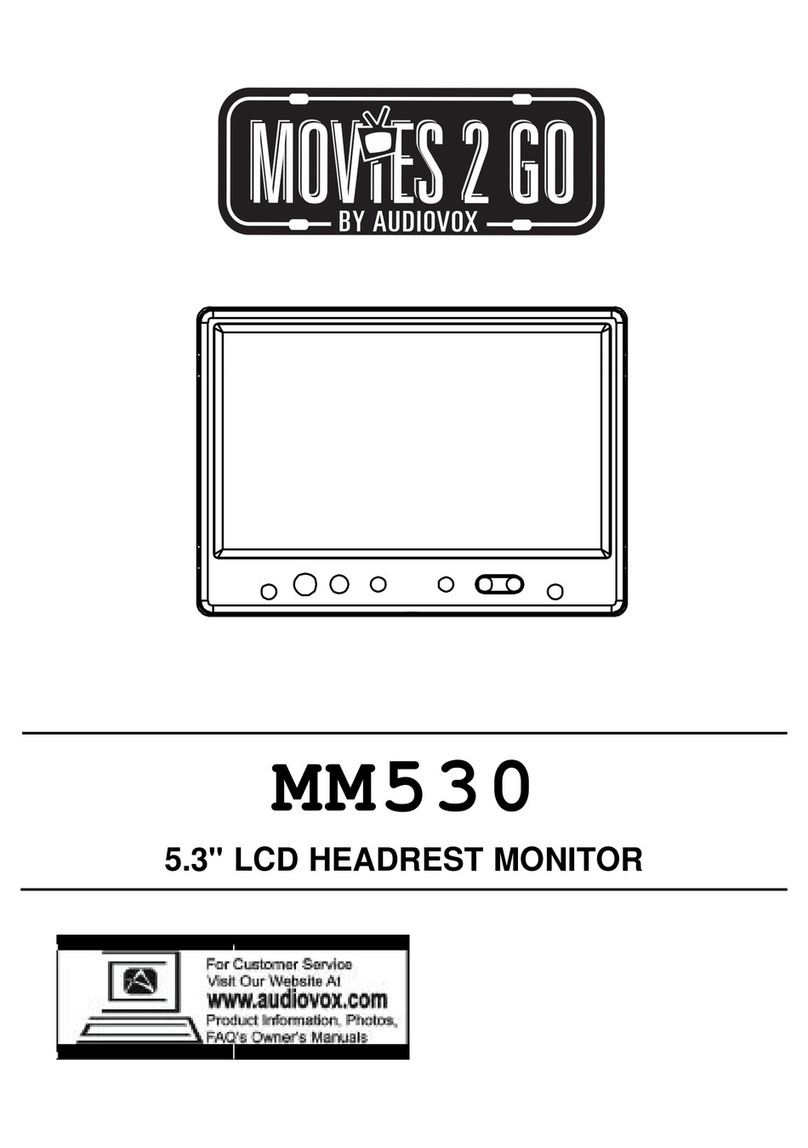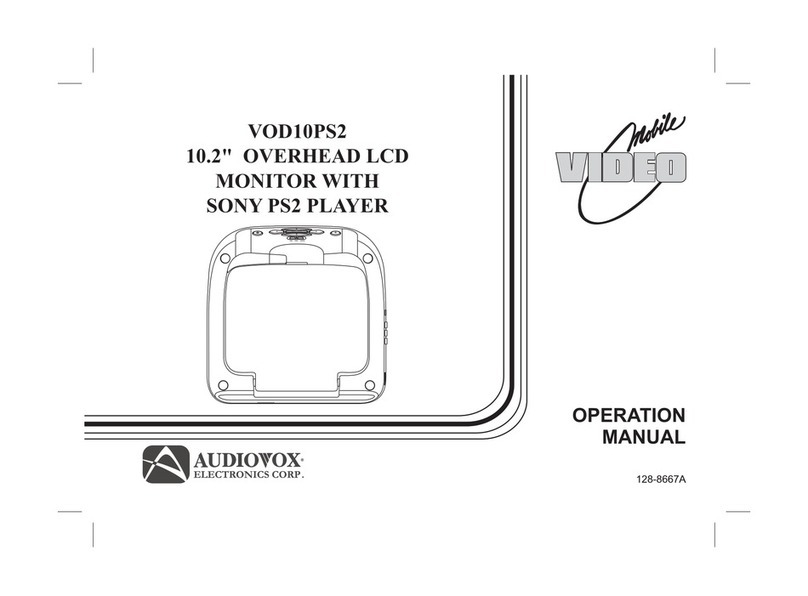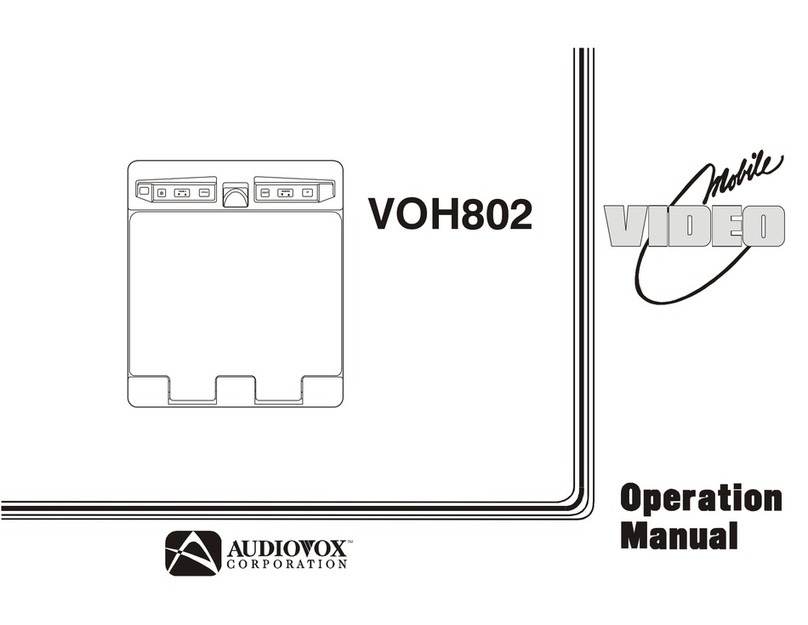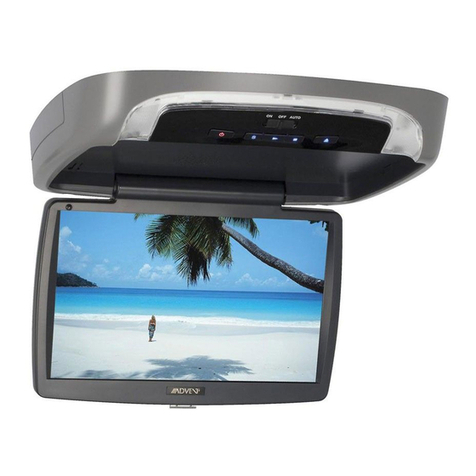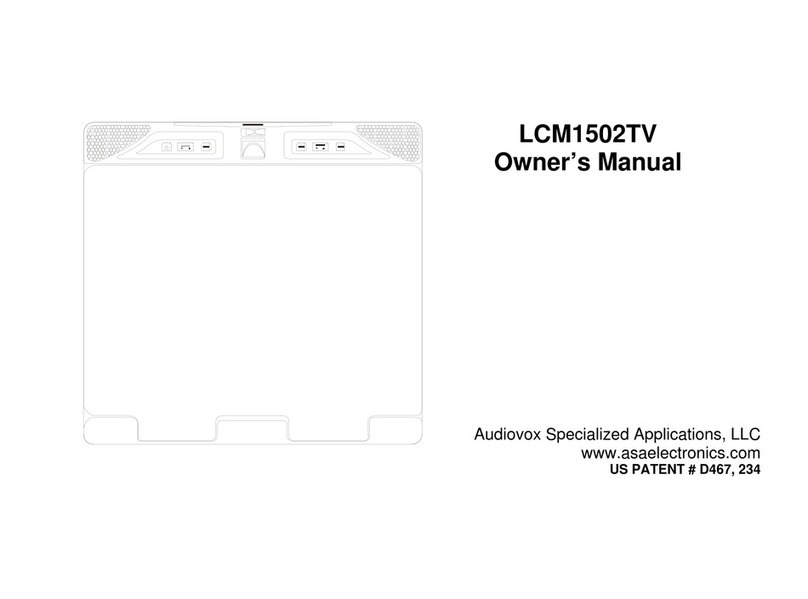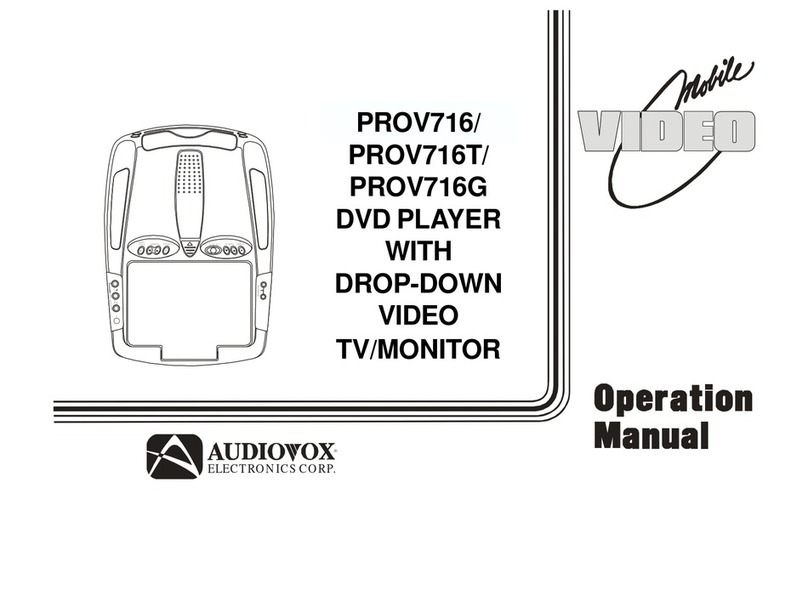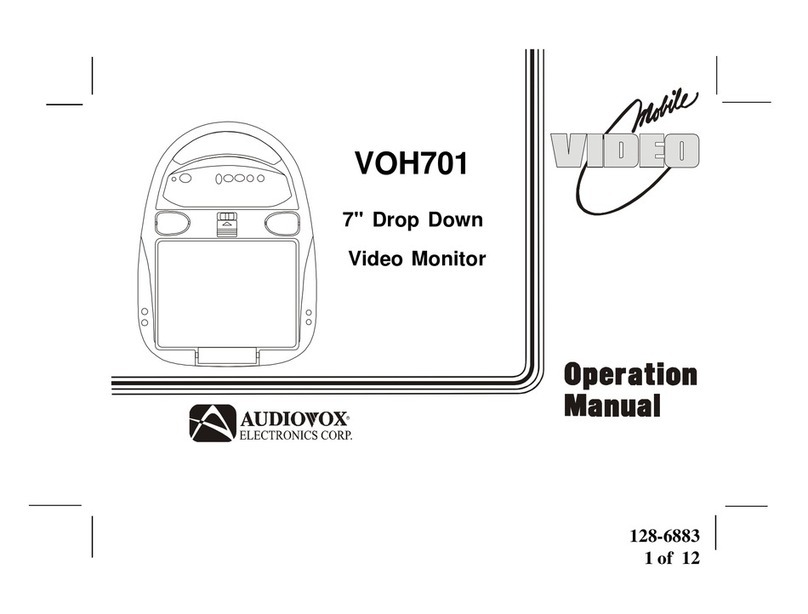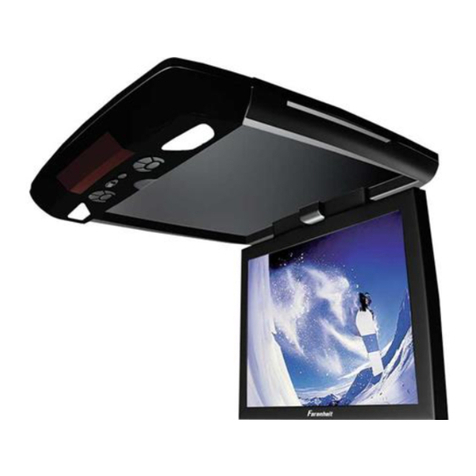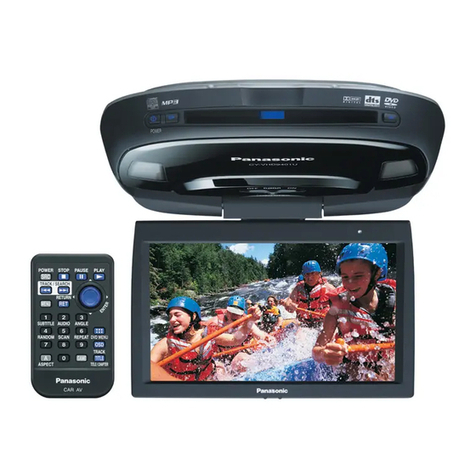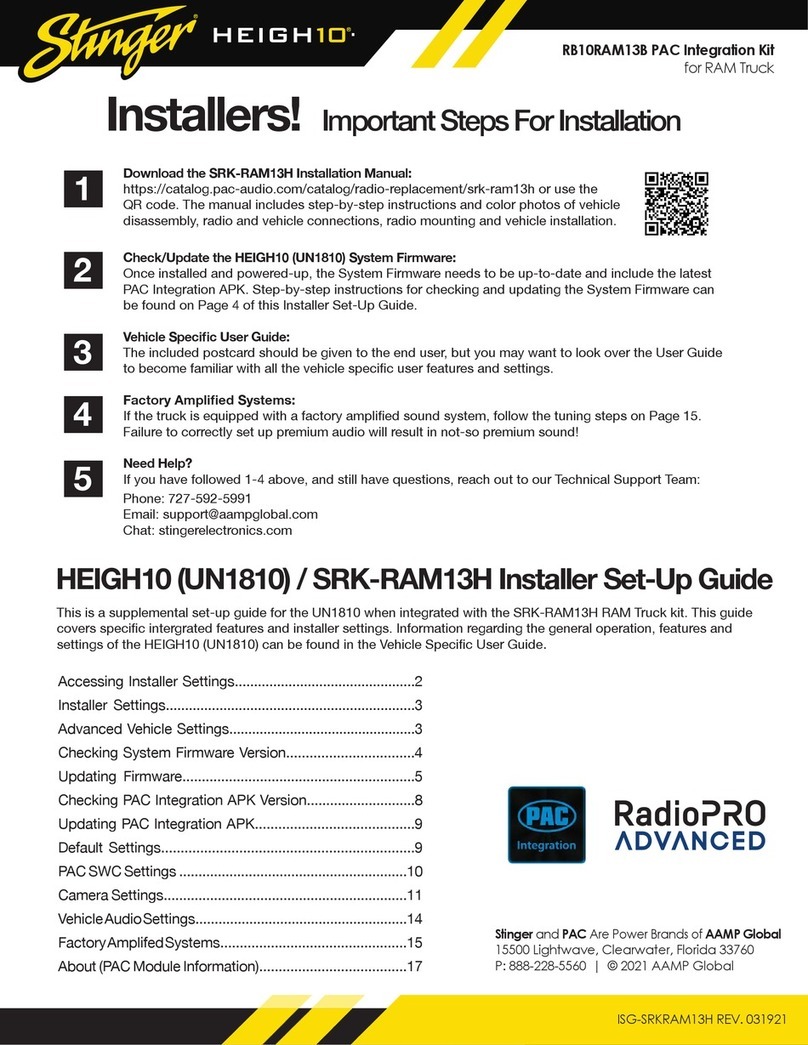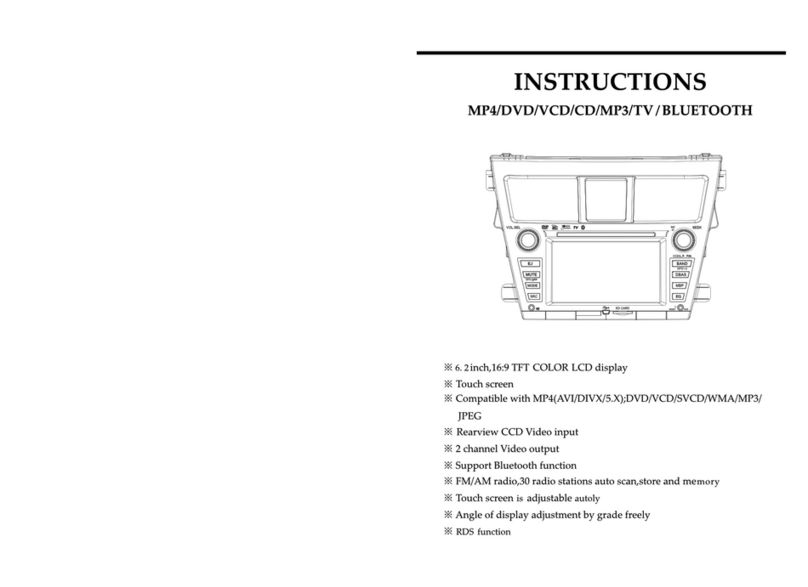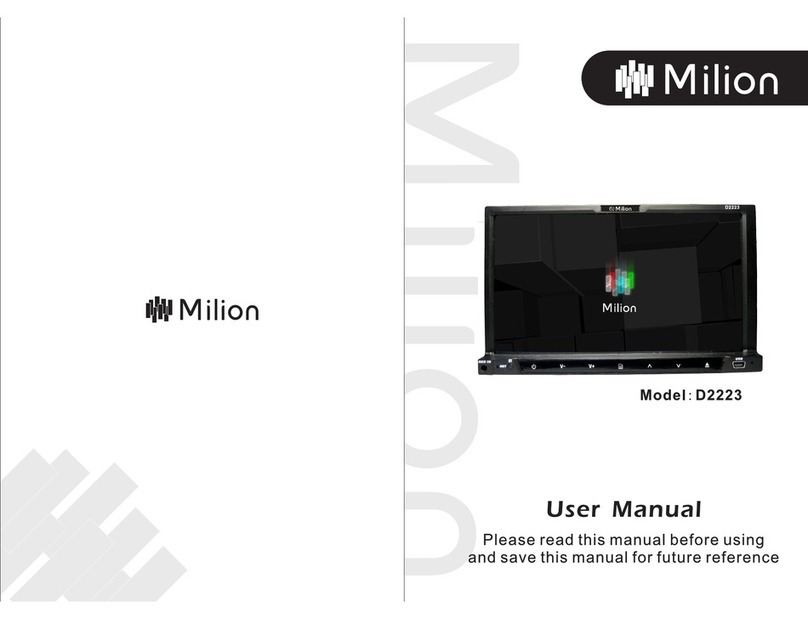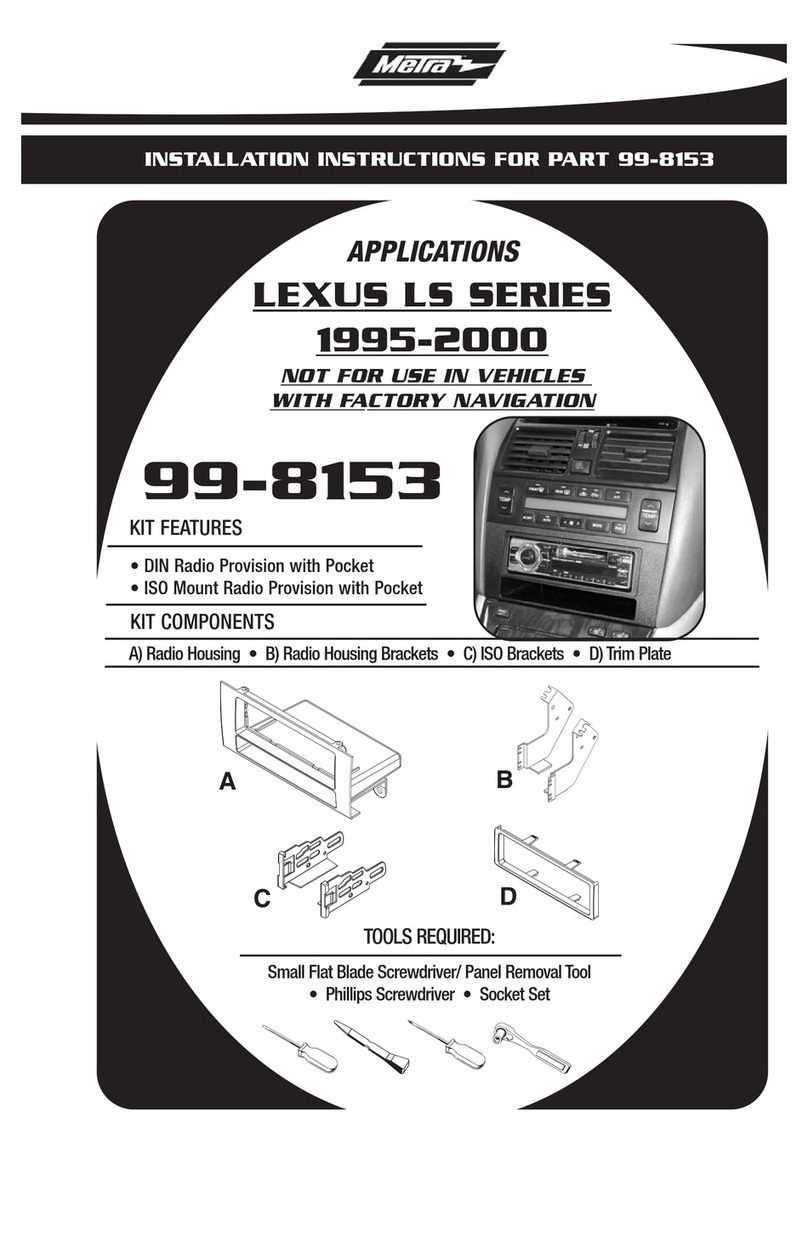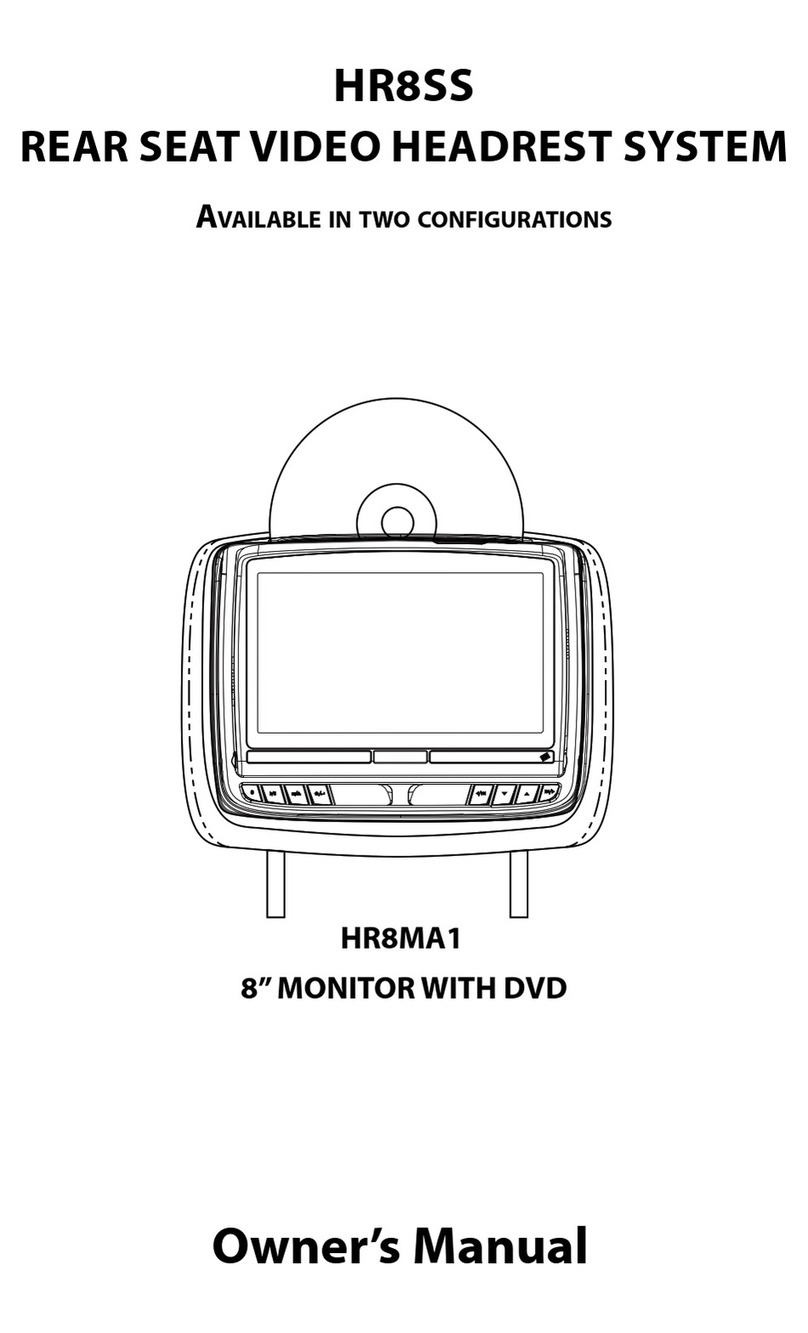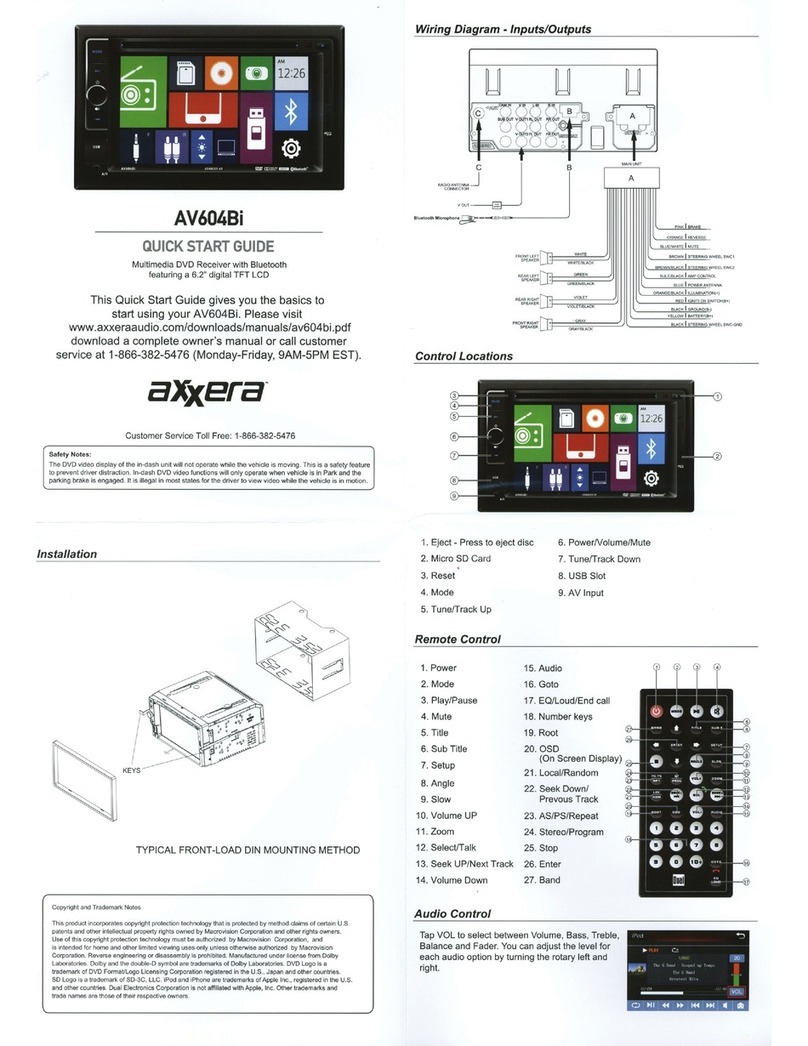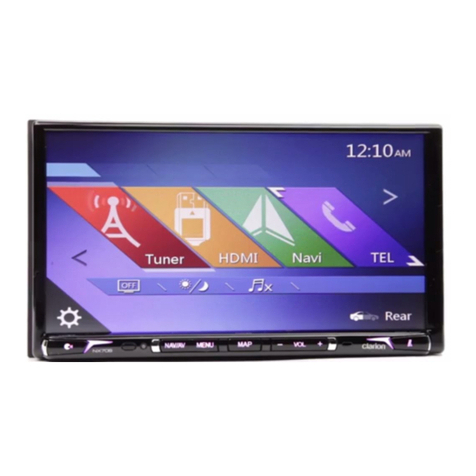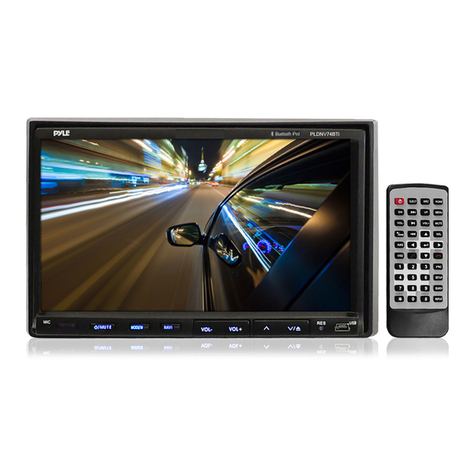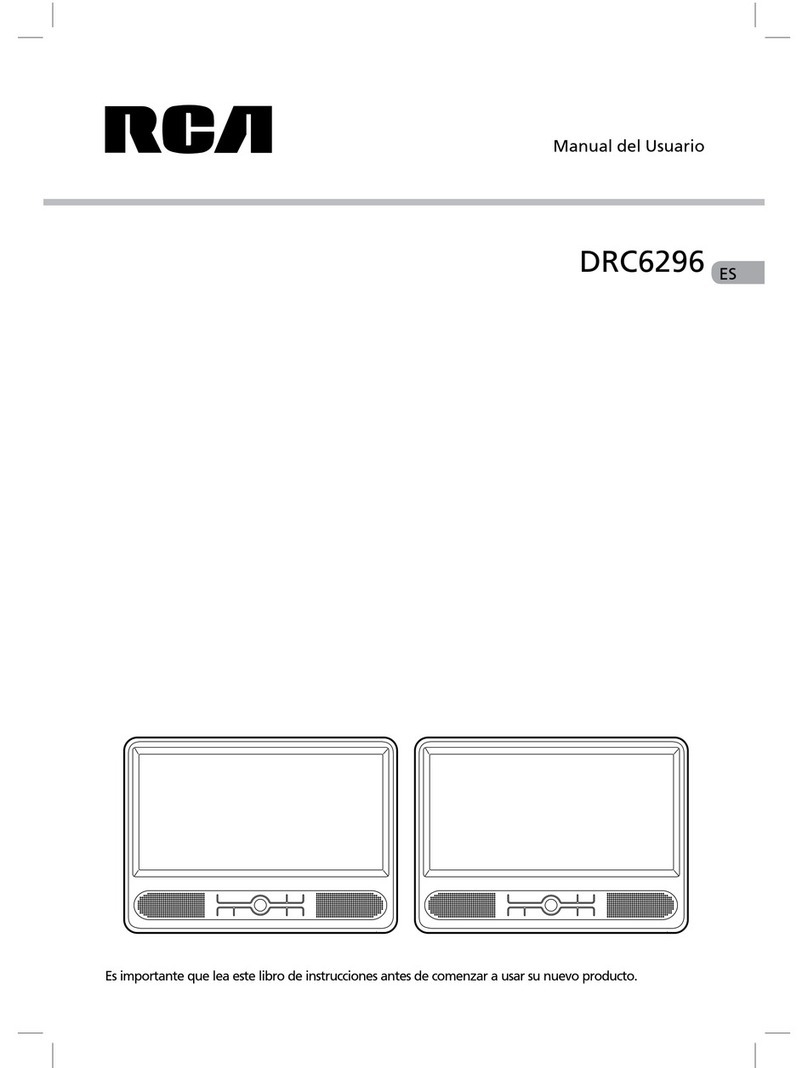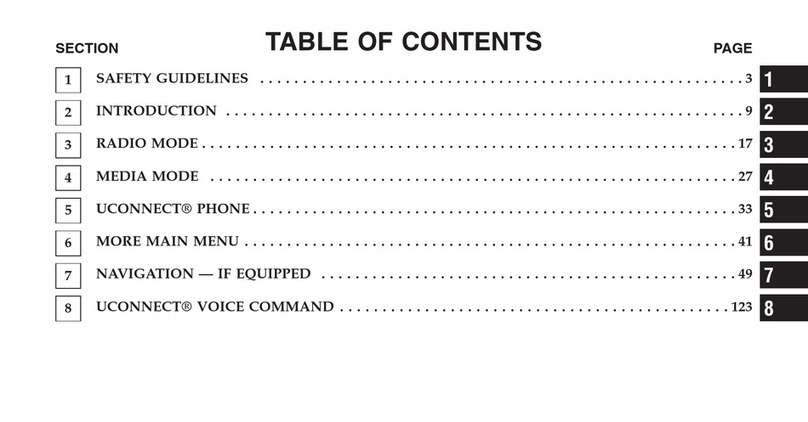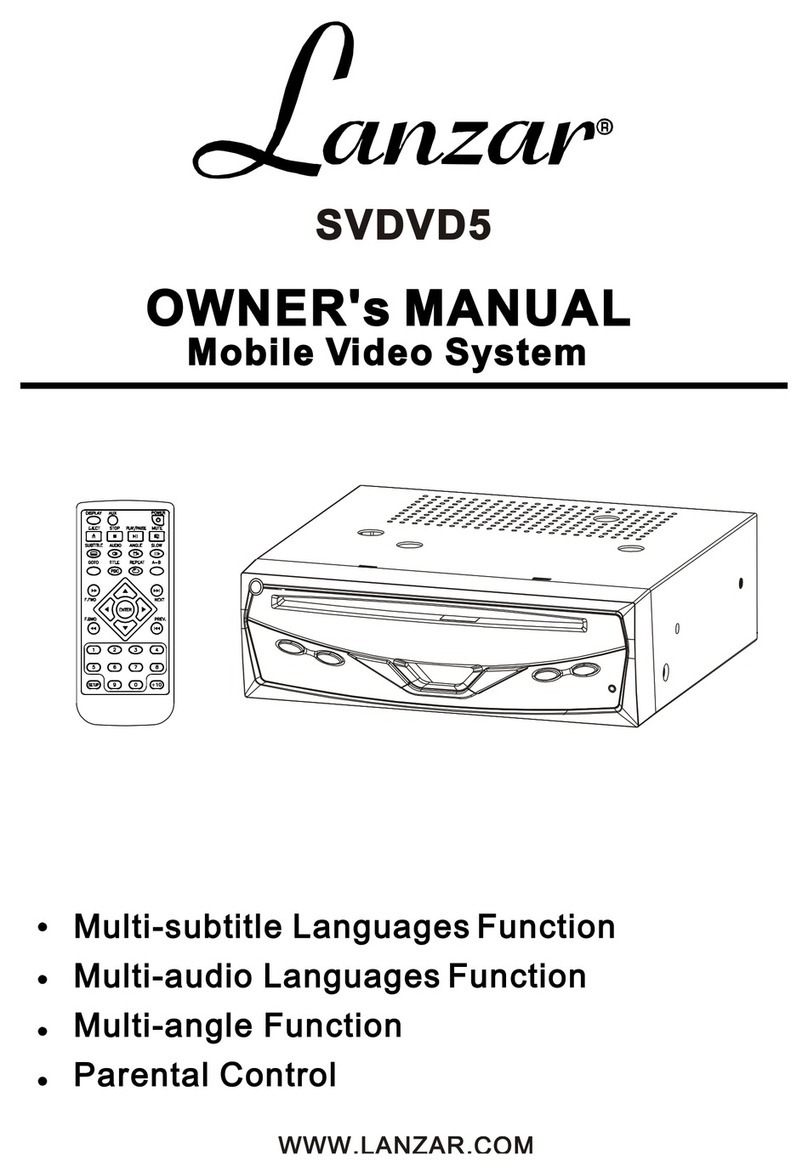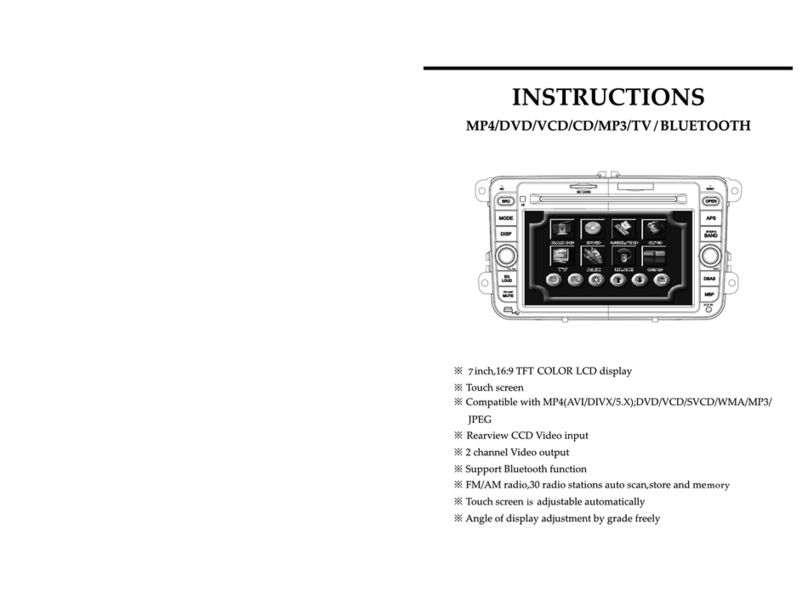
MINI CONSOLE INSTALLATION:
This page only covers special installation considerations for the mini-console installation. If the video
monitor is to be installed in a vehicle with the mini console, this console may need to be trimmed to fit the
contour of the vehicle headliner.
1) In this installation, the video monitor is mounted directly to the overhead cross-member in the roof
using the mounting screw bosses. These screw bosses should contact the cross-member di-
rectly (i.e.: no gap between the screw boss and the roof structure). Also, be sure that the screws
do not pierce the outer roof skin when fully fastened to the cross-member. The mini-console is
attached to the video monitor using the perimeter screw bosses. It is important that the screws
used in this installation are not overtightened, and that the video monitor and mini-console are
mounted in such a way that the assembly does not distort (or bend) when the mounting screws
are tightened. An alternate method is to use a piece of plywood (12"x9"x3/4"). First secure the
plywood block to the cross-member, then screw the monitor into the plywood. See the drawing on
page 5.
2) It is best to mount the video monitor to the roof structure without the mini-console first. There
should be a gap between the headliner and the outer flange of the video monitor. The mini-console
should be cut to full this gap. Apply masking tape to the outer surface of the mini-console in the
areas where the cut will be made.
3) Mark the cut to follow the necessary contour of the roof. The suggested method of marking is as
follows:
A) First mark the narrowest point of the mini-console on the masking tape. Be careful
to consider not only vertical location, but fore-aft location.
B) Using the handle of a screwdriver, make a “transfer marking tool”. See diagram
below. Place the tool against the roof and the marker against the masking tape on
the mini-console. Trace the cut to be made around the entire perimeter of the mini-
console.
C) Cut the mini-console using a sharp utility knife or shears. Make the cut in several
passes over the marked line, each time cutting a little deeper. It is not necessary to
cut completely through the plastic, the cut only need be over 50% of the wall thick-
ness of the plastic. By bending the cut back and forth several times, the plastic will
break cleanly at the cut.
D) Check the fit of the trimmed console and make any minor adjustments necessary.
4) The mini-console can be painted or covered with a material that matches the headliner before
assembling the mini-console to video monitor
.
5) The finished mini-console should be attached to the video monitor, then attach the assembly to the
roof.
-4-
Mini Console Installation:
This page only covers special insta llation considerations for t he mini console instal lation. If the video pod is to be installed
with a custom full sized overhead console, skip to page 8 now.
If the video pod is to be installed in a vehicle with t hemin i console (part number 1181300), this console mayneed tobe
trimmed to fit the contour of the vehicle headliner.
1) In this installation, the video pod is mounted directl y to the overhead crossmember int her oof using the mountingscrew
bosses (item "L" on p2). These screw bosses should contact the crossmember directly (ie: no gap between the screw boss
and the roof structure). Also, be sure that the screws (#3e on p1) do not pierce the outer r oof skin when fullyfastenedinto
the crossmember. The mini console is attached to the video pod using the perimeter screw bosses (item "K" on p2). It is
important that the screws used in this installation are not overt ightened, and that the video pod and mini consoleare mounted
in such a way that the assembly does not distort (or bend) when the mounting screws are tightened.
2) It is best to mount the video pod to the roof structure without the mini console f irst. There should be agap betweenthe
headliner and the outer flange of the video pod. The mini console should be cut to fill this g ap. A pplymasking tapeto the
outer surface of the mini console in the areas where the cut will be made.
3) Mark the cut to be made following the necessary contour of the roof. Suggested method of marking is as follows:
a) First mark the narrowest point of the mini console on the masking tape. Be careful to consider not onlyvertical
location, but fore-aft location.
b) Using the handle of a screwdriver, make a "transfer marking tool" see fig 6 below. Place the tool against theroof, and
the marker against the masking tape on the mini console. Trace the cut to be made around the entire perimeter of the mini
console.
c) Cut the mini console using a sharp utility knife or shears. Make the cut in s everalp asses overt hemarked line,each
time cutting a little deeper. It is not necessary to cut completel y through the plastic, the cut onlyneed be over50 % of the wall
thickness of the plastic. By bending the cut back and forth several times, t hepla stic will break cleanly atthe cut.
d) Check the fit of the trimmed console and make any minor adjustments necessary.
4) The mini console can be painted or covered with a material that matches the headliner before assembling themini
console to the video pod.
5) The finished mini console should be attached to the video pod, then attach the assembly to the roof. See Fig7.
Tape marker to screwdri ver starting at
your mark for the l owest point, then
trace the contour of the roof
Cut Line
Headliner
Lowest Point Mark
Refer to Fig 7 for detail on attaching
console to video pod an d videopod to
vehicle structure.
7
Figure 6
Tape marker to screwdriver starting at
your mark for the lowest point, then
trace the contour of the roof
Cut Line
Headliner
Lowest Point Mark
Refer to Fig 7 for detail on attaching
console to video pod and video pod to
vehicle structure.
Figure 6
